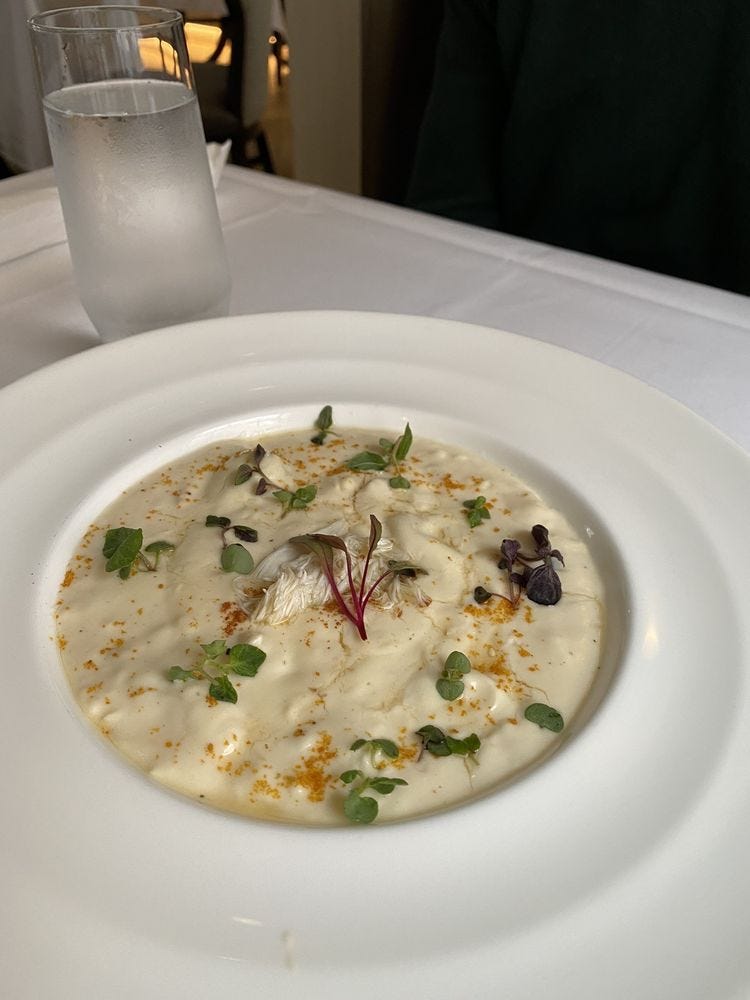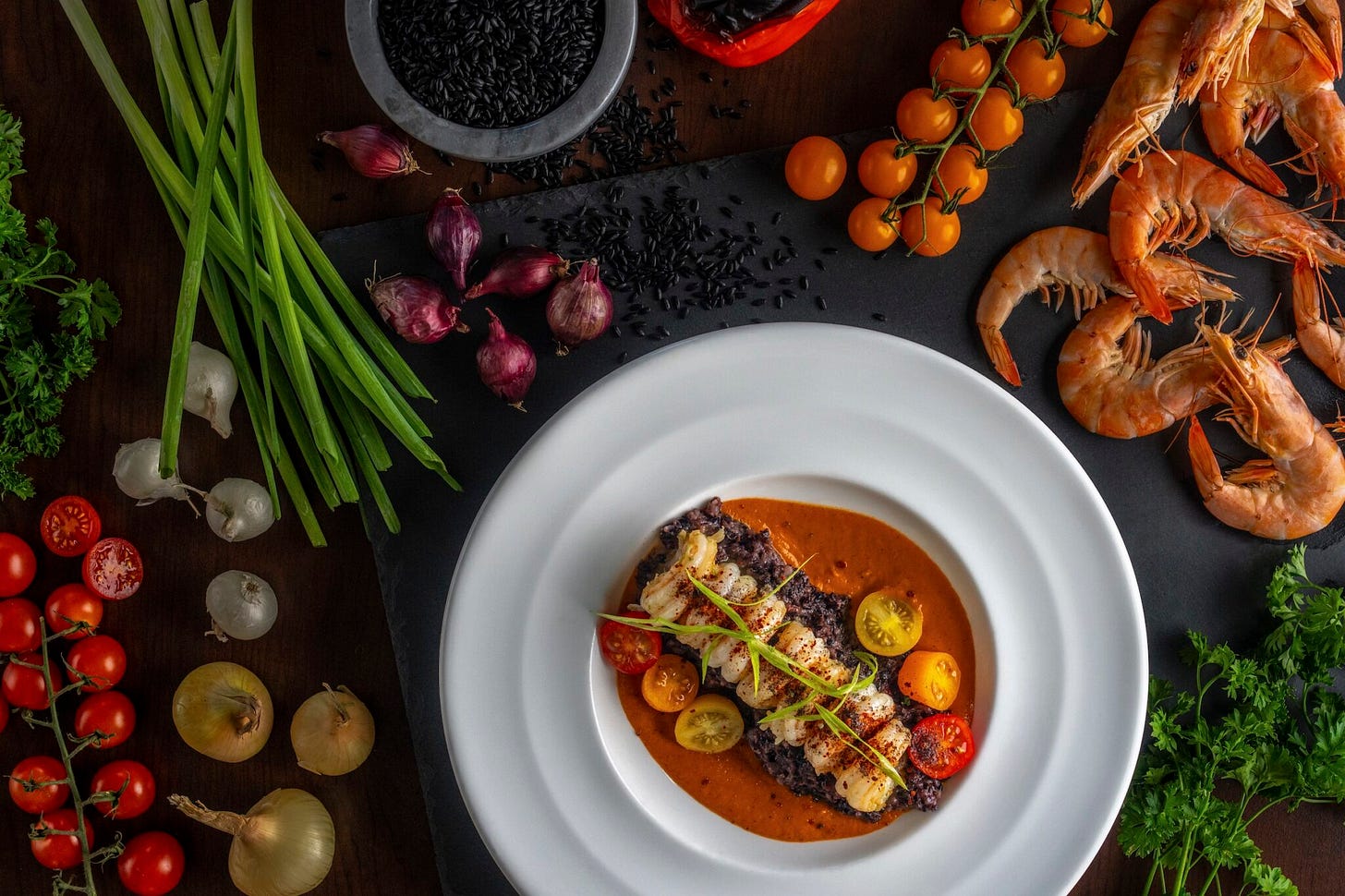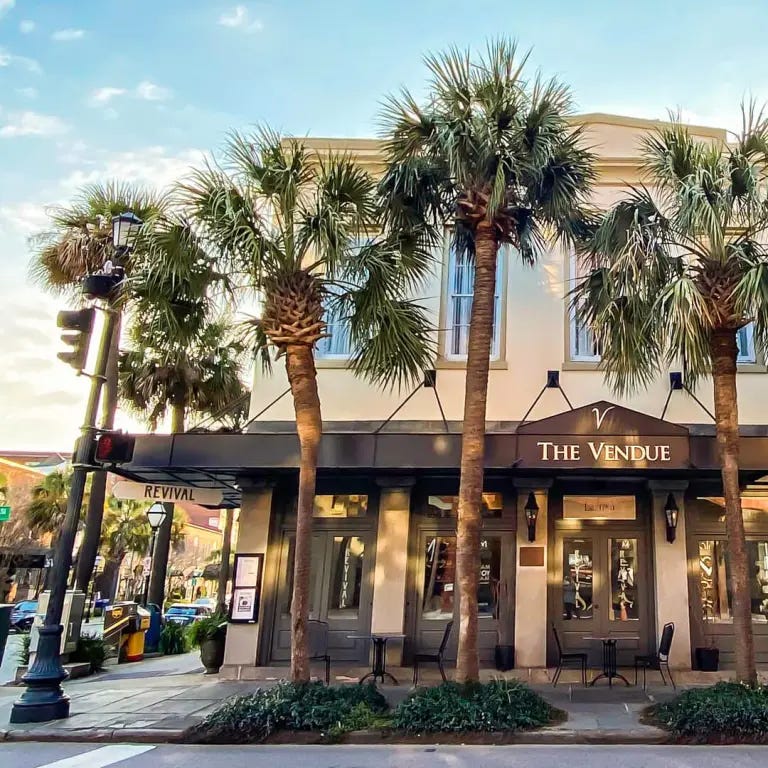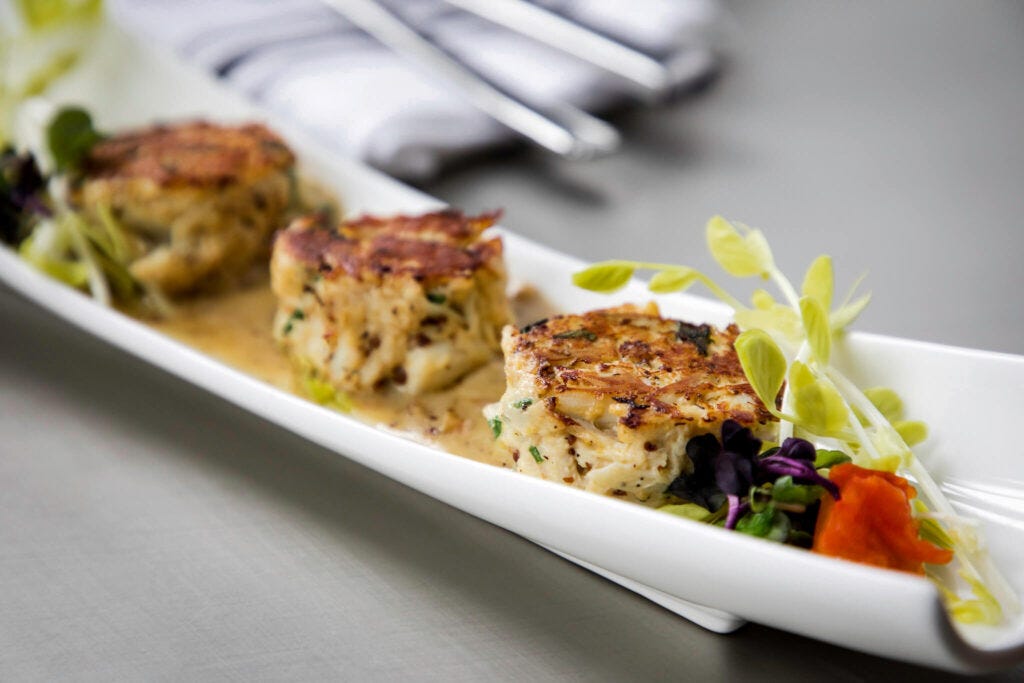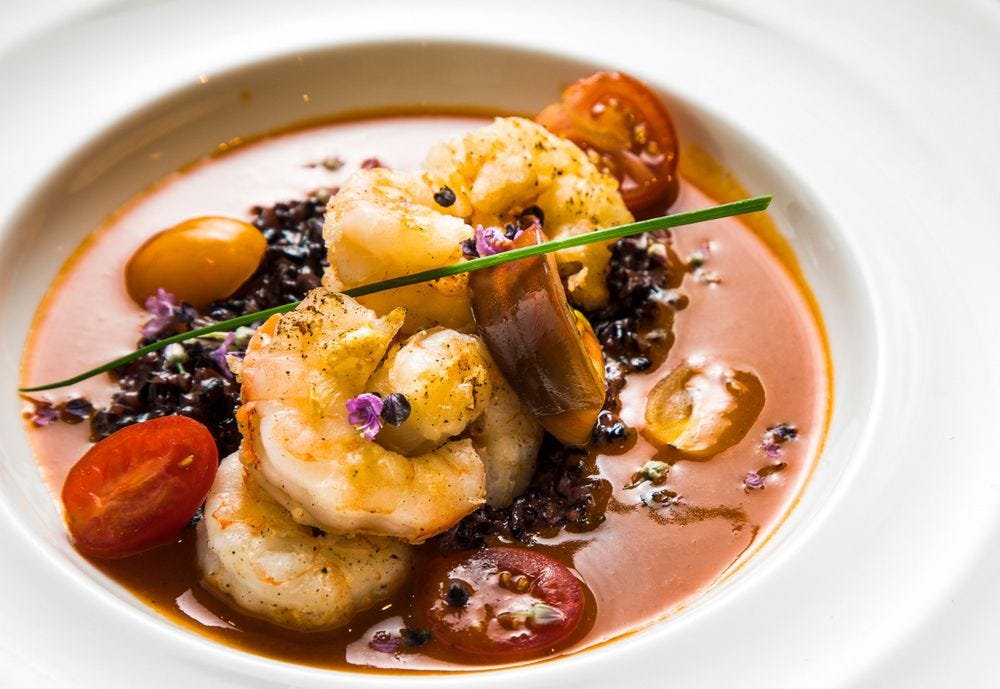Chasing Flavor through Charleston's Past
A place where the air smells of biscuits, she-crab soup, and Guinea Flint Grits.
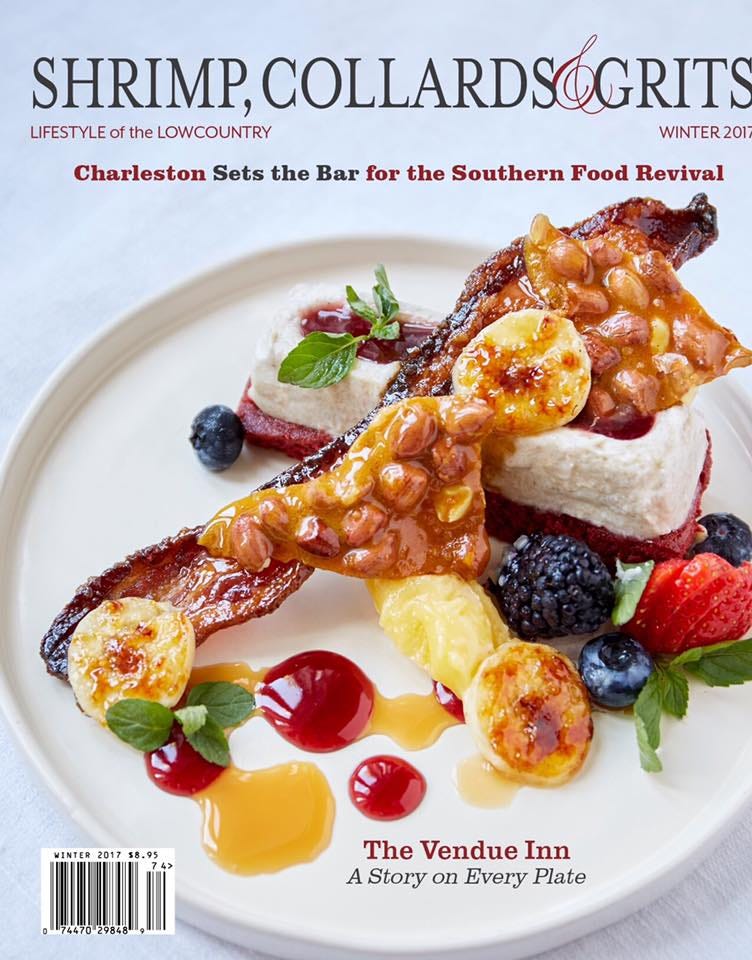
Charleston. She’s a grand old lady who wears her pearls even while stirring She-Crab Soup. You can walk down East Bay Street and catch whiffs of butter, bourbon, and shrimp stock drifting from kitchen doors. Every chef in town has a secret ingredient, and friends swear they’ll never give you their famous recipe—until they do.
No visit to Charleston is complete unless I come home with a new recipe tucked into my pocket. Some people collect postcards or seashells - I hunt for secret ingredients, notes scribbled on napkins, and stories ……
Revival at The Vendue: Where history meets a bowl of She-Crab Heaven
Tucked inside The Vendue Inn at 162 East Bay Street, Revival feels like a love letter to Charleston itself—equal parts refined, soulful, and full of stories. And if there’s one dish that should be declared a local treasure, it’s their she-crab soup—a velvety, briny dream that tastes like the very essence of the Lowcountry, served steaming hot and impossibly rich.
What makes Revival stand out isn’t just the menu—it’s the idea behind it. The chefs here draw inspiration from every culture that shaped Charleston’s table: Spanish settlers, English colonists, West African cooks, and French artisans. Each ingredient feels like a page from South Carolina’s past—brought to life again, beautifully reimagined. This is what it means to honor history while stirring something new into the pot.
And if you’re an art lover, you’ll be right at home. The Vendue has long been known as Charleston’s “Art Hotel”, with more than 200 original works scattered throughout its nooks and hallways. Dining here is as much a feast for the eyes as it is for the taste buds. Upstairs, the Rooftop Bar reigns as Charleston’s number one—where the cocktails come with sweeping views of church steeples and harbor lights, and sunsets feel like a private performance.
Charleston’s chefs are increasingly going back to those old heirloom seeds and culinary traditions forged in Charleston’s earlier days.
A step back in time reminds us that The Vendue’s walls have seen centuries of Charleston life. The property once formed part of a cluster of 1780s warehouse buildings known as Prioleau’s Wharf. French merchants and auctioneers—called venue masters—conducted their trade right here, giving rise to the name The Vendue. The bustle of commerce faded when the Civil War halted trade, but the spirit of exchange—of stories, flavors, and artistry—still hums through every brick and beam.
Today, that old Southern spirit is infused into every bite and every sip. Charleston has always had a way of turning history into hospitality—and at Revival, you can taste it. One spoonful of she-crab soup and you’ll understand why.
A Soup with a Story
I sat down at the table, eager to savor William Deas’ legendary she-crab soup. My server leaned in to share the tale — how Deas, once a Charleston butler, elevated his humble bisque with a dash of sherry and a sprinkling of bright orange crab roe to impress President William Howard Taft during his visit to the Holy City.
One taste, and I understood the legend. The soup was a silken dream — rich yet delicate, the flavor of the sea gently laced with nutty Amontillado sherry. Each spoonful carried a whisper of Charleston history, crowned with glistening roe and generous flakes of colossal lump crab.
It wasn’t just soup. It was a story — one that had simmered for over a century, still capable of stealing the show.
Chef’s Note: Amontillado’s tasting notes include prominent nutty aromas like hazelnut and almond, along with tobacco, dried fruit, caramel, and aromatic herbs. Its palate is characterized by a delicate dryness, sometimes with salty, saline, or even slightly bitter notes reminiscent of the sea, and a complex, long, dry finish with hints of wood or leather.
Next, the kitchen sent out a refreshing hearts of palmetto salad that sang with coastal flavor. Tender baby lettuces from Wadmalaw Island mingled with charred palmetto pickle and a cloud of creamy avocado mousse. A toasted benne seed vinaigrette lent a nutty whisper of Charleston’s past, while preserved Meyer lemon purée and a scattering of salty dried black olives added bright, briny punctuation.
Then came a dish steeped in memory — a tribute to Charleston’s beloved Perdita’s, the city’s first nationally acclaimed restaurant, long gone but never forgotten. Their famed crab cakes live on here, reimagined as Remick: pure lump crab, no fillers, just sweet, delicate meat bound by tradition. The tall, golden cake arrived crusted to perfection, crowned with a drizzle of piquant whole-grain brandy mustard sauce. Every element on the plate honored the Lowcountry’s best local purveyors — a modern echo of Perdita’s timeless grace.
To finish, dessert arrived — elegant, nostalgic, and just a little bit sinful. A warm slice of bourbon bread pudding, baked with rich brioche and golden raisins, came nestled beneath a drizzle of praline sauce and a dollop of Chantilly cream. Each bite carried the scent of toasted pecans and brown sugar, the kind of sweetness that makes you close your eyes for a moment and simply remember.
It tasted like Sunday supper at your grandmother’s house — comforting, familiar, but with a whisper of refinement that reminded you this was Charleston, where old recipes never fade; they just get dressed up for the evening.
In Charleston, recipes are heirlooms, whispered from one cook to another, refined but never truly changed. They remind us that the best ingredients aren’t always written down — they’re felt, remembered, and shared with love. And that, perhaps, is the city’s greatest secret of all.
I left that day with a pocket full of memorable heirloom dishes with recipes full of tradition, history, and local goodness.
So next time you find yourself wandering along East Bay Street, step inside The Vendue. Take in the art, order the soup, and raise a glass to a city that never stops blending the old with the new—one delicious bite at a time.
I am excited to share the secrets to William Deas’ She Crab Soup. Become a subscriber to our online cookbook, Tides of Tradition, and never miss a recipe or a story. Just hit Subscribe. Thank you for stopping by. Let me know: what is your favorite Charleston experience? Let’s have a chat and we’ll visit that together in a future story.
Keep reading with a 7-day free trial
Subscribe to The Diary of Southern Lifestyle Author Pat Branning to keep reading this post and get 7 days of free access to the full post archives.


